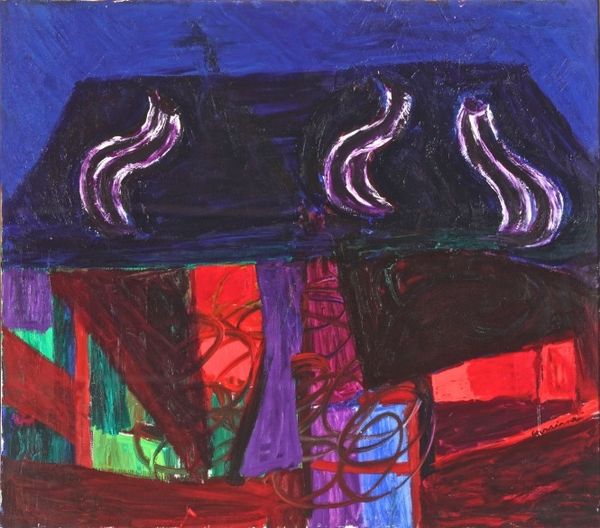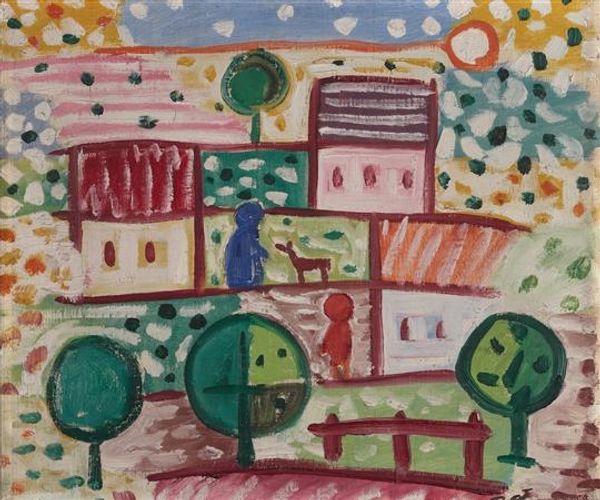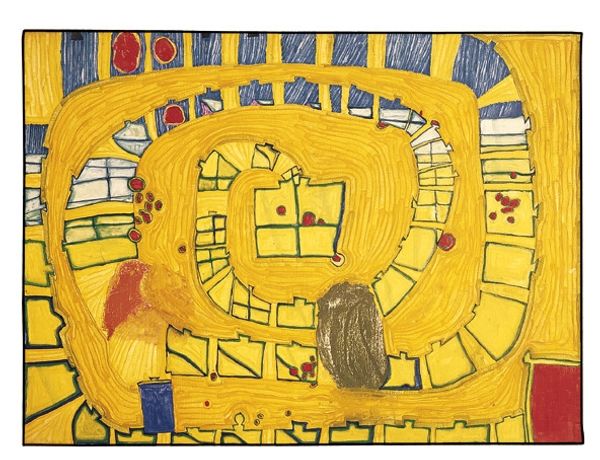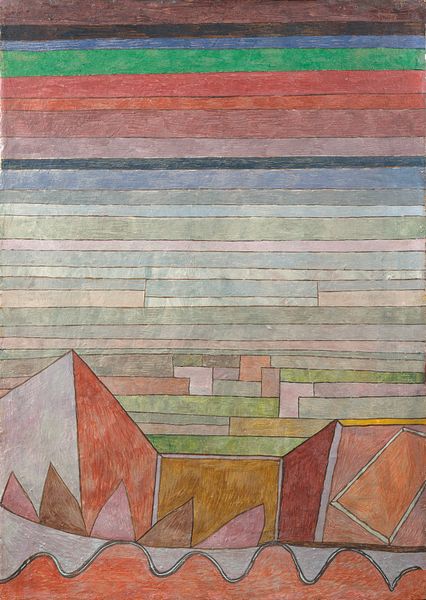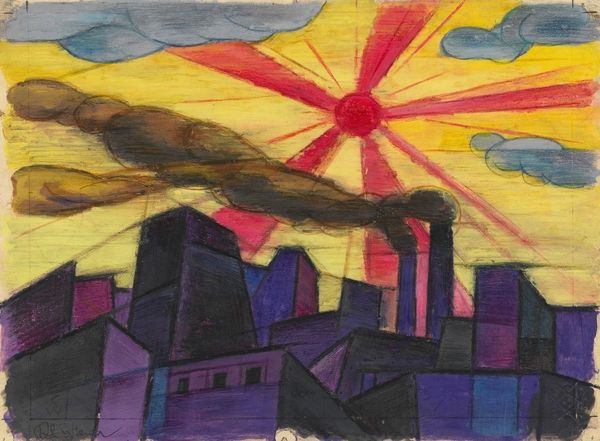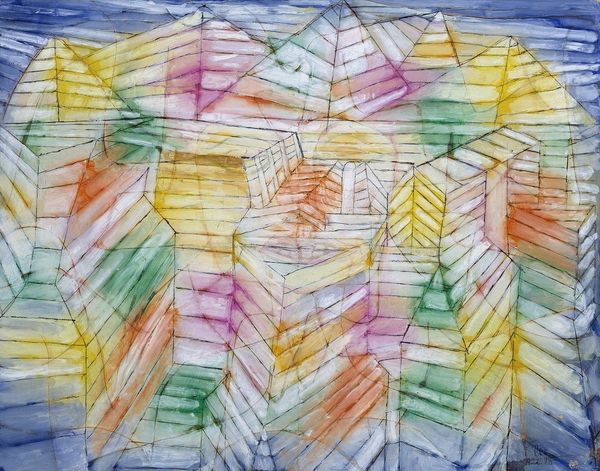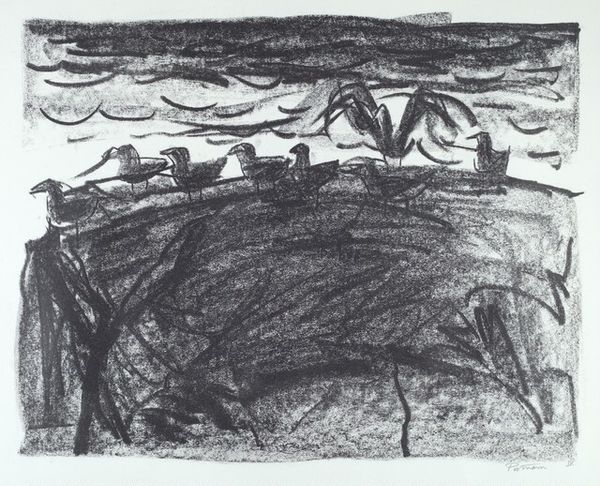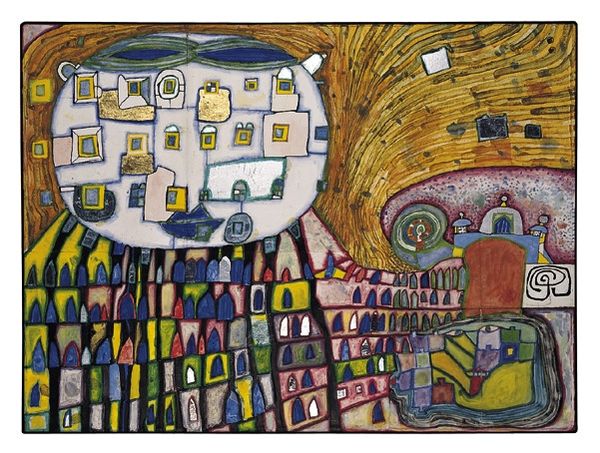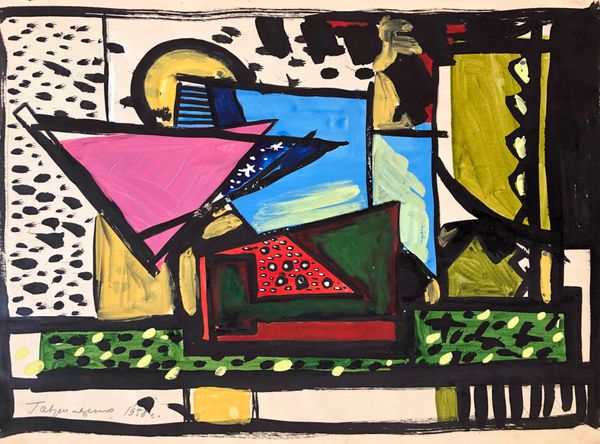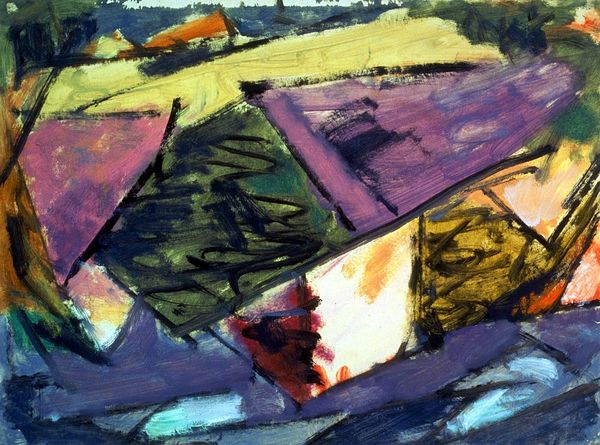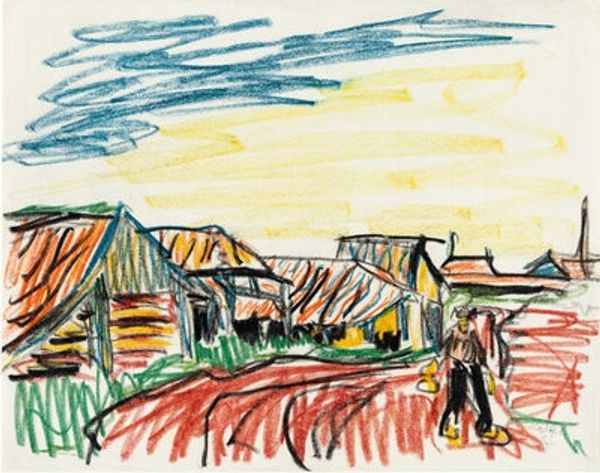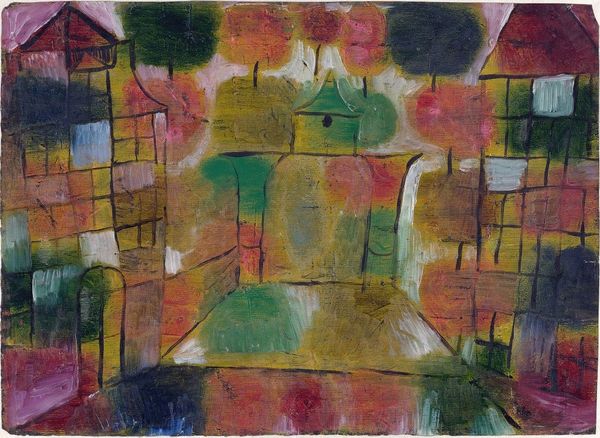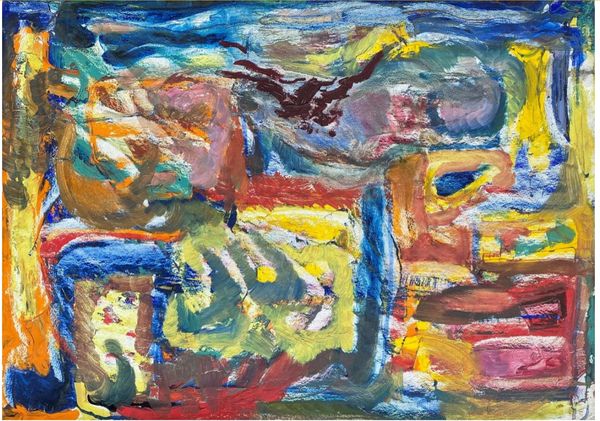
collage, painting, watercolor
#
collage
#
painting
#
landscape
#
oil painting
#
watercolor
#
geometric
#
modernism
Copyright: Charles Garabedian,Fair Use
Editor: Here we have Charles Garabedian's "Landscape" from 1976, using collage and painting with oil and watercolor. The geometric shapes give it a playful, almost childlike quality, but also create a strange sense of distance. What do you see in this piece, considering its historical moment? Curator: It's tempting to view this work as a straightforward landscape, but the abstraction pushes us to consider broader societal shifts occurring in art and culture in the 70s. There's a breakdown of traditional artistic hierarchies happening then. The collage elements, combined with painting, point to a rejection of pure formalism, a pushing against the established institutions dictating "high" art. Do you think the geometric shapes, as you call them, evoke specific social structures? Editor: I see what you mean. The pyramid shape might be a kind of hierarchy. Are those stacked bricks at the top... perhaps symbolic of industrial society? Curator: Perhaps, or think of the "Landscape" genre itself. Traditionally landscapes celebrated idealized nature and national identity, yet Garabedian’s deconstruction suggests a more fractured understanding of those concepts. Considering the aftermath of Vietnam, and increasing social fragmentation, it would fit the disillusionment in a post-utopian, perhaps dystopian, vision. Do you get a sense of instability from this, as opposed to the pastoral scenes painted a century before? Editor: Definitely unstable. I wouldn't want to live there. The color palette, especially the stark yellows and blues, enhances that sense of unease. It’s interesting to think how it reflects broader anxieties. Curator: Exactly. Garabedian, in a way, uses the art institution against itself. Exhibiting this fractured vision, where viewers are forced to consider not just beauty, but societal and political concerns, reveals art's potential as a mirror reflecting and refracting the complexities of its time. This painting encourages viewers to be active participants in deciphering what a "landscape" truly represents. Editor: I learned so much about the intersection of art and broader cultural anxieties from our discussion. Curator: And I was also reminded how the destruction of traditional techniques in "Landscape" prompts the audience to look for the cultural cues within.
Comments
No comments
Be the first to comment and join the conversation on the ultimate creative platform.
